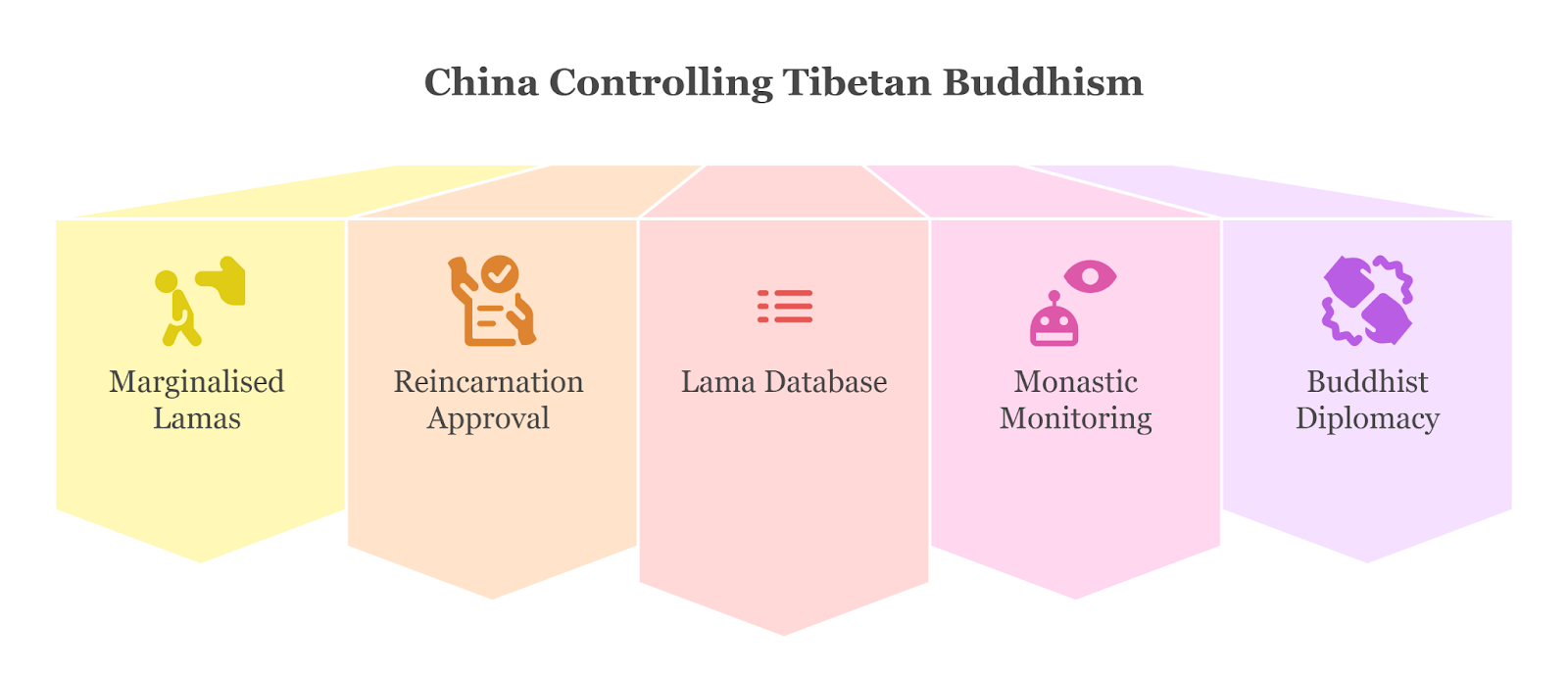Font size:
Print
India-China Rivalry Unfolding in the Himalayas
China, India and the conflict over Buddhism
Context: While headlines focus on Chinese naval expansion in the Indo-Pacific and India’s maritime countermeasures, a quieter and more consequential contest is underway — in the Himalayas.
More on News
- The high-altitude spiritual and cultural contest between India and China is rapidly emerging as a new front in Asian geopolitics.
- At the heart of this rivalry lies not just territory, but faith and cultural legitimacy.

How Has Buddhism Become a Tool of Statecraft in the Himalayas?
- What once appeared to be a peaceful spiritual tradition rooted in non-violence and mysticism has now morphed into a geopolitical instrument.
- Monasteries, lamas, and sacred sites are no longer insulated from politics. Today, they are deeply entwined with state strategies, particularly in contested regions like Ladakh, Tawang, and Bhutan.
- The reincarnation of high lamas — especially the Dalai Lama — is not just a matter of religion but a test of sovereignty and regional influence.
How Is India Responding to China’s Buddhist Outreach?
- India has hosted the Dalai Lama and the Tibetan Government-in-Exile since 1959, gaining global moral credibility.
- However, for decades, this presence did not translate into strategic advantage.
- In recent years, India has started asserting its own Buddhist heritage more actively:
- Promoting pilgrimage circuits such as Bodh Gaya, Sarnath, and Kushinagar
- Strengthening cultural ties with Himalayan Buddhist communities
-
- Leveraging its image as the land of Buddha’s enlightenment
-
- Despite these initiatives, experts argue that India’s Buddhist diplomacy remains fragmented, especially when compared to China’s centralised, long-term approach.
Why Is the Dalai Lama’s Succession a Major Geopolitical Flashpoint?
- The current 14th Dalai Lama, who turned 90 in 2025, has announced his intention to reincarnate outside Chinese territory, possibly in India.
- Beijing, however, plans to use the historic Golden Urn method to appoint a successor within its territory.
- This is expected to result in two rival Dalai Lamas:
- One endorsed by the Tibetan exile community and supported by India
- One sanctioned by the Chinese state and installed in Lhasa under tight control
- This spiritual schism could force Himalayan Buddhist communities across Ladakh, Sikkim,
- Arunachal Pradesh, Nepal, and Bhutan to choose sides, with profound consequences for regional allegiance and identity.
Are Internal Buddhist Disputes Also Becoming Strategic Faultlines?
China and India are not just contesting geographical spaces but also spiritual legitimacy within sects. For instance:
- The Karma Kagyu school has two rival Karmapas. India and China are seen to tacitly support different leaders.
- The controversial Dorje Shugden sect, rejected by the Dalai Lama, has found sympathy from Chinese authorities aiming to undermine the exile religious hierarchy.
Why Does Spiritual Influence Matter in Border Regions?
- In border zones like Ladakh, monasteries play a crucial role in shaping community identity and political loyalty. A change in spiritual allegiance can lead to a shift in strategic influence. Infrastructure is sparse, terrain is tough — so soft power becomes hard power.
- A monastery aligning with a Chinese-recognised lama can alter power dynamics in an entire valley or district. For India, it is vital that faith-based loyalties do not drift across the Line of Actual Control.
What Lies Ahead in the India-China Spiritual Contest?
- The post-Dalai Lama era will bring new challenges. Nations with significant Buddhist populations — from Mongolia and Sri Lanka to Thailand and Japan — may be drawn into the legitimacy debate.
- India, as the likely host of the next Dalai Lama, will face immense diplomatic pressure and potential retaliation from China.
- The stakes are high, and the outcome could reshape alliances across the Himalayan belt.
